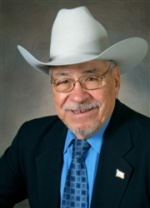New Mexico 2010 legislative election results
House
|
Alabama • Alaska • Arizona • Arkansas • California • Colorado • Connecticut • Delaware • Florida • Georgia • Hawaii • Idaho • Illinois • Indiana • Iowa • Kansas • Kentucky • Maine • Maryland • Massachusetts • Michigan• Minnesota • Missouri • Montana • Nebraska • Nevada • New Hampshire • New Mexico • New York • North Carolina • North Dakota • Ohio • Oklahoma • Oregon • Pennsylvania • Rhode Island • South Carolina • South Dakota • Tennessee • Texas • Utah • Vermont • Washington • West Virginia • Wisconsin • Wyoming |
| Other 2010 Election information |
New Mexico State House Election Results
This page contains macro-level election results and analysis for the New Mexico House of Representatives. For results in individual contests, see our New Mexico House of Representatives elections, 2010. The following is a breakdown of the state house before and after the election:
| New Mexico House of Representatives | |||
|---|---|---|---|
| Party | As of November 1, 2010 | After the 2010 Election | |
| Democratic Party | 45 | 37 | |
| Republican Party | 25 | 33 | |
| Total | 70 | 70 | |
What You'll See on This Page
This page displays the following lists of candidates
- Incumbents who ran on November 2
- Incumbents who were defeated
- Challengers who defeated an incumbent
- Newly elected senators
- List of all winners
- Unopposed candidates
- Third party candidates
State House Overview:
- There were 65 incumbents who ran in the November 2 general election. Only 7 incumbents lost, and thus 58 incumbents were re-elected to the New Mexico House of Representatives.
- No Republican incumbents lost in the general election, while 7 incumbent Democratic incumbent lost.
- There will be 12 new representatives sworn-in. Of those 12, 1 is a Democrat and 11 are Republicans
- Of the 70 seats up for election, 37 were won by Democrats and 33 by Republicans.
- 38 candidates were unopposed, 19 Democrats and 17 Republicans.
- Only 2 candidates ran as an independent or third party candidate in the general election
Incumbency Analysis
Of the 4,958 state house seats up for election, incumbents ran in the general election for 4,091 (79.5%) of them. Of these 4,091 incumbents, 413 lost their re-election bids, 403 Democrats and 10 Republicans. In New Mexico, 65 incumbents (92.9%) ran for re-election. Of these 65, 7 incumbent representatives were defeated. All 7 incumbents were Democrats.
Incumbents who ran on November 2
The following is a list of all of the incumbents who ran on the November 2 general election ballot:
- Thomas Taylor (New Mexico)
- James R.J. Strickler
- Paul Bandy
- Ray Begaye
- Sandra Jeff
- Eliseo Alcon
- Andrew Barreras
- Patricia Lundstrom
- Henry Saavedra
- Ernest Chavez, Sr.
- Miguel Garcia (New Mexico)
- William O'Neill (New Mexico)
- Antonio Maestas
- Edward Sandoval
- Sheryl Williams Stapleton
- James White (New Mexico)
- Mimi Stewart
- Benjamin Hayden Rodefer
- Danice Picraux
- Al Park
- Lorenzo Larranaga
- Jimmie Hall (NM 28)
- Thomas Anderson, New Mexico Representative
- Karen Giannini
- Dona Irwin
- Joni Gutierrez
- Mary Helen Garcia
- Antonio Lujan
- Jeff Steinborn
- Dianne Hamilton
- Rodolpho Martinez
- Nick Salazar
- Roberto Gonzales
- Jeannette Wallace
- Jane Powdrell-Culbert
- Jim Trujillo
- Ben Lujan, Sr.
- Brian Egolf
- Luciano Varela
- Don Tripp
- Rhonda Sue King (New Mexico)
- Nathan Cote
- William Gray (New Mexico)
- John Heaton
- Zachary Cook
- Dennis Kintigh
- Candy Spence Ezzell
- Nora Espinoza
- Jack Thomas
- Shirley Tyler
- Donald Bratton
- Anna Crook
- James Roger Madalena
- Keith Gardner
- Dennis Roch
- W. Ken Martinez
- Richard Vigil
- Debbie Rodella
- Rick Miera
- Joseph Cervantes
- Thomas Garcia (New Mexico)
- Eleanor Chavez
- William Rehm
- Gail Chasey
Incumbents defeated
The following is a list of incumbents defeated on November 2:
| Candidate | Party | District |
|---|---|---|
| Andrew Barreras | ||
| Benjamin Hayden Rodefer | ||
| Karen Giannini | ||
| Jeff Steinborn | ||
| Nathan Cote | ||
| John Heaton | ||
| Jack Thomas |
Challengers who beat an incumbent
The following is a list of challengers who defeated an incumbent on November 2:
| Candidate | Party | District |
|---|---|---|
| David Chavez | ||
| David Doyle | ||
| Nathaniel Gentry | ||
| Terry McMillan | ||
| Ricky Little (New Mexico House of Representatives) | ||
| Cathrynn Brown | ||
| Timothy Lewis (New Mexico) |
New Representatives and General Election Winners
1,345 new representatives were elected across the country. This includes challengers who defeated incumbents as well as candidates who won open seats. Of these 1,345, 988 were Republicans and 357 were Democrats. In New Mexico, 12 new representatives will be sworn-in. Of those 12, 1 are Democrats and 11 are Republicans. In the 5 open seat contests, Republicans won 4 and Democrats 1. In total, New Mexico elected 70 representatives, 33 Republicans and 36 Democrats.
Newly elected representatives
The following are the newly-elected members of the New Mexico House of Representatives:
Democratic
Republican
Open Seat Winners
The following is a list of candidates who won election in seats where no incumbent was running:
Democratic
Republican
Candidates who won election
The following is a list of all candidates elected to the New Mexico House of Representatives:
Democratic
- Ray Begaye
- Sandra Jeff
- Eliseo Alcon
- Patricia Lundstrom
- Henry Saavedra
- Ernest Chavez, Sr.
- Miguel Garcia (New Mexico)
- William O'Neill (New Mexico)
- Antonio Maestas
- Edward Sandoval
- Sheryl Williams Stapleton
- Mimi Stewart
- Danice Picraux
- Al Park
- Dona Irwin
- Joni Gutierrez
- Mary Helen Garcia
- Antonio Lujan
- Rodolpho Martinez
- Nick Salazar
- Roberto Gonzales
- Jim Trujillo
- Ben Lujan, Sr.
- Brian Egolf
- Luciano Varela
- Rhonda Sue King (New Mexico)
- George Dodge Jr.
- James Roger Madalena
- W. Ken Martinez
- Richard Vigil
- Debbie Rodella
- Rick Miera
- Joseph Cervantes
- Thomas Garcia (New Mexico)
- Eleanor Chavez
- Gail Chasey
- Albert Hale
Republican
- Thomas Taylor (New Mexico)
- James R.J. Strickler
- Paul Bandy
- David Chavez
- Alonzo Baldonado
- James White (New Mexico)
- James Smith (New Mexico)
- David Doyle
- Conrad James
- Lorenzo Larranaga
- Jimmie Hall (NM 28)
- Thomas Anderson, New Mexico Representative
- Nathaniel Gentry
- Terry McMillan
- Dianne Hamilton
- Jeannette Wallace
- Jane Powdrell-Culbert
- Don Tripp
- Yvette Herrell
- Ricky Little (New Mexico House of Representatives)
- William Gray (New Mexico)
- Cathrynn Brown
- Zachary Cook
- Dennis Kintigh
- Candy Spence Ezzell
- Nora Espinoza
- Timothy Lewis (New Mexico)
- Shirley Tyler
- Donald Bratton
- Anna Crook
- Keith Gardner
- Dennis Roch
- William Rehm
Competitiveness

Across the nation, 4,958 state house seats were up for election in 2010. In 1,680 (33.9%) of these state house contests, there was a major party candidate with no major party opposition. In New Mexico, 38 candidates (54.3% of all seats) faced no major party opposition. Of these 39, 19 were Democrats and 17 were Republicans.

Unopposed candidates in general election
The following candidates did not face major party competition:
Democratic
- Ben Lujan, Sr.
- Albert Hale
- Antonio Lujan
- Antonio Maestas
- Edward Sandoval
- Eliseo Alcon
- Eleanor Chavez
- Gail Chasey
- Henry Saavedra
- James Roger Madalena
- Jim Trujillo
- Mary Helen Garcia
- Nick Salazar
- Patricia Lundstrom
- Ray Begaye
- Sandra Jeff
- W. Ken Martinez
- Debbie Rodella
- Rick Miera
- Thomas Garcia (New Mexico)
Republican
Ballot Access
In New Mexico, 2 (1.9%) of the 105 house candidates ran as independent or third party candidates. None won election in the November 2 general election.
Third party candidates
The following is a list of third party and independent candidates who ran in 2010:
National Partisan Trends
|
Alabama • Alaska • Arizona • Arkansas • California • Colorado • Connecticut • Delaware • Florida • Georgia • Hawaii • Idaho • Illinois • Indiana • Iowa • Kansas • Kentucky • Maine • Maryland • Massachusetts • Michigan• Minnesota • Missouri • Montana • Nebraska • Nevada • New Hampshire • New Mexico • New York • North Carolina • North Dakota • Ohio • Oklahoma • Oregon • Pennsylvania • Rhode Island • South Carolina • South Dakota • Tennessee • Texas • Utah • Vermont • Washington • West Virginia • Wisconsin • Wyoming |
| Other 2010 Election information |
National Partisan Trends
The following tables detail the partisan breakdown of national election results. These results provide context for Republican gains in New Mexico.
Incumbents who were defeated in the general election
Across the nation, only 15 Republican incumbents were defeated while 492 Democratic incumbents were defeated. In total, 507 (10.4%) of the 4,872 incumbents running in the general election were defeated. The following is a breakdown of incumbent defeats in the 2010 general election:
The following is the breakdown of incumbents who lost.
| Incumbents defeated in 2010 legislative elections | |||
|---|---|---|---|
| Party | Senate | House | Total |
| Democratic | 89 | 403 | 492 |
| Republican | 5 | 10 | 15 |
| TOTALS | 94 | 413 | 507 |
Total new legislators elected
In total, 1,733 (28.3%) new legislators were elected in 2010. Of these 1,733, 1,266 (73.1%) are Republicans and 467 (26.9%) are Democrats.
The following is the breakdown of new legislators.
| New Legislators after the 2010 legislative elections | |||
|---|---|---|---|
| Party | Senate | House | Total |
| Democratic | 110 | 357 | 467 |
| Republican | 278 | 988 | 1,266 |
| TOTALS | 388 | 1,345 | 1,733 |
Winners of Open Seats
Open seats contests made up 1,178 (19.2%) of the 6,125 seats on November 2. Of these 1,178 open seats, Republicans won 729 (61.9%) while Democrats won 449 (38.1%). Going into the election, the number of open seats formerly held by each party was quite similar. Estimates prior to the election suggest that approximately 52% of the open seats were previously held by Republicans and 48% were held by Democrats.
The following is the breakdown of open seat winners.
| Open Seat Winners in 2010 legislative elections | |||
|---|---|---|---|
| Party | Senate | House | Total |
| Democratic | 108 | 341 | 449 |
| Republican | 191 | 538 | 729 |
| TOTALS | 299 | 879 | 1,178 |
Impact on legislative majorities
- See also: Partisan balance of state legislatures
Heading into the November 2 elections, the Democratic Party held a commanding lead in state houses in the 88 legislative chambers that held elections in 2010. 52 of the 88 chambers, or nearly 60% of them, had a Democratic majority, while only 33 of them had a Republican majority. (Two chambers had an exactly equal number of Democrats and Republicans and one is officially nonpartisan.) The following is a partisan breakdown of state legislatures prior to the November 2 election:
| Partisan breakdown before the November 2010 Election | ||||
|---|---|---|---|---|
| Legislative chamber | ||||
| State senates | 23 | 18 | 1 | 1 |
| State houses | 29 | 15 | 1 | - |
| Totals: | 52 | 33 | 2 | 1 |
As a result of the election, Republicans picked up 20 legislative chambers while Democrats lost 20. Republicans won 53 total chambers on November 2, while Democrats won only 32. The following is a partisan breakdown of state legislatures after the November 2 election:
| Partisan breakdown after the November 2010 Election | ||||
|---|---|---|---|---|
| Legislative chamber | ||||
| State senates | 16 | 25 | 1 | 1 |
| State houses | 16 | 28 | 1 | 0 |
| Totals: | 32 | 53 | 2 | 1 |
Another way to examine the data is to gauge how many chambers had gains for the Democratic Party versus the Republican Party. Using this variable, the wide-sweeping Republican victory is further amplified. Democrats bolstered their majorities in only 7 of 88 (7.96%) state chambers. These legislatures are as follows:
| State legislative chambers where Democrats gained seats on November 2 | ||
|---|---|---|
| State | Chamber | Number of seats gained by Democrats |
| California | Assembly | + 2 |
| Delaware | House | + 2 |
| Hawaii | Senate | + 1 |
| Maryland | Senate | + 2 |
| Massachusetts | Senate | + 1 |
| Missouri | Senate | + 1 |
| West Virginia | Senate | + 1 |
In 7 chambers, the GOP kept their current number of seats. In one chamber, the California State Assembly, both major parties gained seats by filling 2 vacancies and defeating an incumbent independent. Overall, the Republican Party picked up legislative seats in 75 (85.2%) of the 88 legislative chambers that held elections on November 2.
Impact on State Politics
Along with the GOP capture of the U.S. House of Representatives, state Republicans gained trifectas (control of the governorship, house, and senate) in 12 states. The following is a breakdown of trifectas across the nation, before and after the 2010 election:
| Trifectas before and after the 2010 Election | ||||||
|---|---|---|---|---|---|---|
| Party | Before election | U.S. House seats | After election | U.S. House seats | Gain/loss states | Gain/loss congressional seats |
| 16 | 131 | 11 | 115 | -5 | -16 | |
| 8 | 66 | 20 | 198 | +12 | +132 | |
Before the election, 131 U.S House seats were in states with Democratic trifectas, while 66 districts were in states with Republican trifectas. After the election, Republicans trifectas control redistricting for 198 U.S. House seats while Democrats control only 115. Additionally, California, the strongest Democratic trifecta with 53 U.S. House representatives, passed propositions that take redistricting power away from state government.








